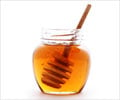A new piece of research suggests that Leptospermum honey, a particular kind of honey indigenous to New Zealand and Australia, can be an effective agent in topical wound care, particularly where antibiotic resistance is an issue.
Published in the European Journal of Clinical Microbiological Infectious Diseases, the research paper points out that this exciting new treatment has been around since the dawn of history-honey was first used as a first aid treatment four thousand years ago in Ancient Egypt.Leptospermum honey has been shown to possess unique plant derived components that make it an ideal wound dressing, including novel antimicrobial and immune-modulatory compounds.
The honey is said to have several properties that also aid in wound healing: it has low pH levels, helps remove non-vital tissue from the wound area, stimulates new tissue growth, and reduces scarring and pain levels.
What is also key is that all these benefits exist without any toxicity to healthy tissue.
"There is an urgent need for new, effective agents in topical wound care, and selected honeys show potential in this regard," the report states.
The paper also describes how medical-grade honey might be a strong combatant against antibiotic resistant pathogens, such as MRSA and vancomycin-resistant strains (VRS).
Advertisement
"Multi-drug resistance limits treatment options and results in the use of more expensive or more toxic drugs, with corresponding increases in patient morbidity and mortality. . . The current issues surrounding antibiotic resistance, and a growing body of evidence supporting the use of honey as a dressing for a wide range of wounds, has increased interest in its use in the clinic," it adds.
Advertisement
It further reveals that a gene expression analysis, carried out to determine whether the honey's effect was different than that of traditional antibiotics, led to the conclusion: "When compared to the published data on the effects of various antibiotics on the gene expression of E. coli, active Leptospermum honey produced a unique expression signature, suggesting that it works by a different mode of action to the other inhibitors."
"The data presented here argue for a greater use of medicinal-grade honey in wound care, particularly where antibiotic resistance is an issue," the paper concludes.
Source-ANI
LIN










